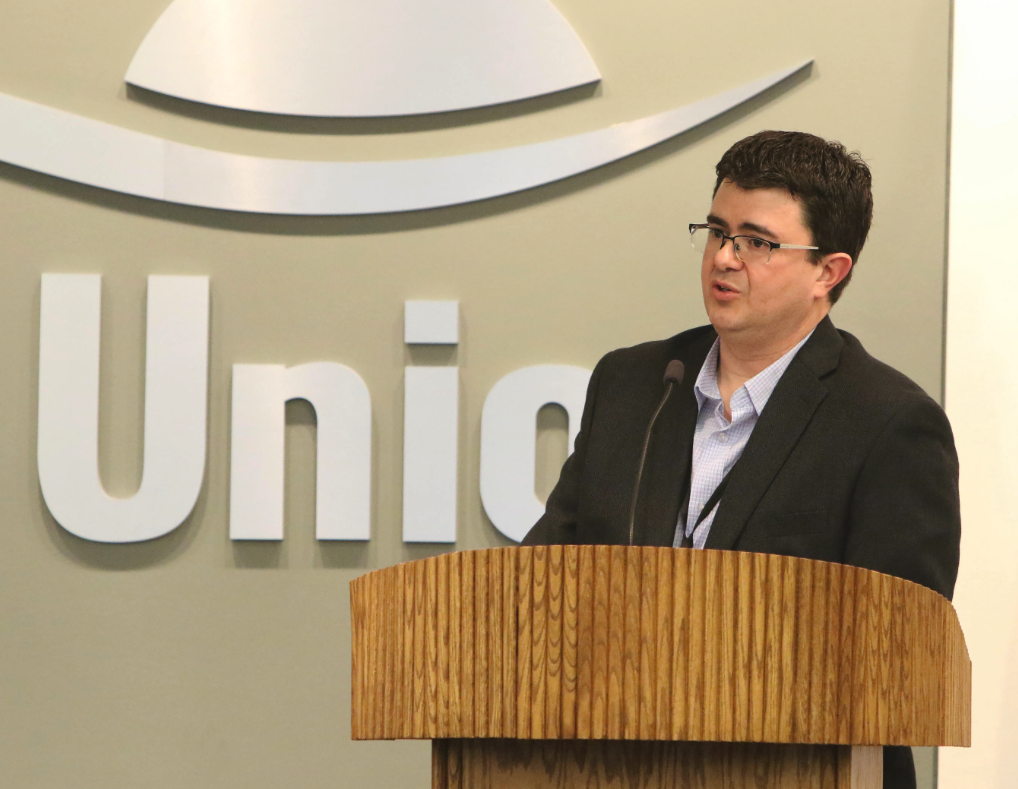Raj Khosla, professor of precision agriculture at Colorado State University, challenged farmers to think about how far the technology of agriculture has come in the past 40 years to gauge what farming will look like in 2057.
He showed a picture of a Global Positioning System receiver from 1976 to farmers and ag professionals Monday at the Precision Agriculture Summit at the North Dakota Farmers Union Conference Center.
“We went from something that only a few would fit in this entire room to something that now fits on a fingertip,” he said, referring to the GPS chip now in cellphones and other devices. “Things are changing more rapidly now than over the past 40 years.”
A new technology that may be available in the next two years is biodegradable sensors that could be scattered in farm fields, Khosla said. The sensors would record data like temperature, sunlight and moisture and report the information to computer servers.
At the end of the growing season, the disposable sensors would be worked into the ground rather than gathered.
This type of information could be combined with data from satellites, drones, planting equipment, soil analysis and harvest data into what is called “big data,” according to Jamie Denbow, product manager at Farmers Edge.
“The big data question is not about collecting the data,” he said. “But how we use it to make a more informed decision.”
Farmers Edge is a subscription service based in Canada that provides analysis maps coordinating data available for farmers. The service includes automated weather reporting equipment the farmer places in his fields to localize weather reports and forecasts.
The intent is to optimize inputs, maximize the output and improve the net profit, Khosla said.
“No farmer is using all the technology,” he said. “The intent is to put the right product, in the right amount, at the right place and in the right manner.”
In some cases this can mean limiting the inputs in a field or portion of a field where the soil is not capable of producing good or even average yields.
Khosla likened it to pulling on his little finger. No matter how he pulled, the finger wouldn’t get any longer. Instead, gloves are made to fit the hand.
Terry Griffin, cropping systems economist for the Department of Agriculture Economics at Kansas State University, said most farmers won’t be looking to expand the technology on their farms during the current period of low farm prices.
“There is going to be less equipment being purchased,” he said. “Now we have to figure out what do we do with the data we are generating.”
Farmers who updated equipment during the good farm prices of 2012 and 2013 often have sensing equipment they may not be using. He speculated that some farmers had not calibrated the yield monitoring equipment in their combines or downloaded the data from the GPS monitors.
“Focus on the technology you have on the farm to make better decisions,” he said.
Griffin also said precision ag technology can make a farm more profitable, but it does not solve all problems in agriculture.
“Farmers struggling because of poor management skills won’t be saved by adding technology requiring increased management skills,” he said.
SOURCE: The Jamestown Sun
By Keith Norman

